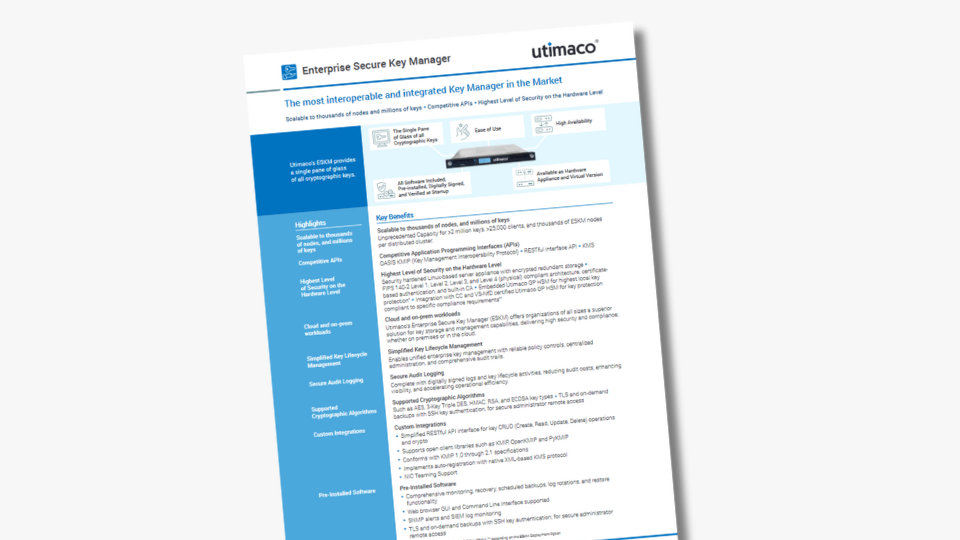Data breaches are a global problem. Just this summer alone, a large credit reporting agency breach in July exposed the sensitive data of over 4.4 million Americans, including Social Security numbers. A French telecom company suffered a ransomware-driven breach in August, affecting 6.4 million users whose bank details and contact information were exposed. A major Singapore car distributor announced a CRM breach in August, impacting 147,000 customers.
Years of continuous breaches have led to increasingly strict regulation and compliance efforts globally.Organizations face an increasingly complex compliance landscape as data protection regulations proliferate globally. From GDPR to protect Europeans, to HIPAA for American healthcare data, and PCI DSS for worldwide payment processing, the list continues to grow. For example, the in-process EU's NIS2 Directive calls on Member States to define national cybersecurity strategies.
One requirement remains constant: strong technical measures to safeguard sensitive data. Central to fulfilling these obligations is a powerful combination—data encryption coupled with Key Management (KM). Together, they establish the foundation of a sustainable compliance strategy.
The Compliance Challenge
Today's organizations must navigate a complex maze of overlapping regulatory requirements, each with nuances but sharing common themes. GDPR demands "appropriate technical and organizational measures" to ensure data security. HIPAA requires covered entities to implement technical safeguards for protected health information. PCI DSS mandates specific protections for cardholder data. Add industry-specific regulations like FISMA for government contractors, FERPA for educational institutions, and the EU NIS2 Directive, along with other country-specific regulations, and it can become expensive to maintain compliance without using tools that cover common requirements across your organization's compliance list.
The cost of non-compliance is staggering. GDPR fines can reach up to 4% of global annual revenue or €20 million, whichever is higher. HIPAA violations carry penalties up to $1.5 million per violation category per year. Beyond monetary fines, organizations face reputational damage, loss of customer trust, and potential legal liability. The question isn't whether to invest in data protection—it's how to do so efficiently and effectively. Encryption consistently appears as a recognized and recommended control across nearly every regulatory framework.
Encryption as a Compliance Enabler
Encryption serves as a strong compliance enabler because it directly addresses the main requirement shared by all data protection laws: making data unusable to unauthorized individuals. When implemented correctly, encryption converts sensitive data into unreadable ciphertext, ensuring that it remains protected if data is accessed without authorization.
Modern encryption strategies must address two critical scenarios. Data at rest encryption protects information stored on servers, databases, laptops, and mobile devices. Data in transit encryption safeguards information as it moves across networks, whether internal or across the internet. Together, these approaches create comprehensive protection throughout the data lifecycle.
Regulatory frameworks explicitly recognize encryption's value. GDPR Article 32 specifically mentions "the pseudonymization and encryption of personal data" as examples of appropriate technical measures. HIPAA's Security Rule offers a significant incentive: properly encrypted data may qualify for Safe Harbor provisions, potentially exempting organizations from breach notification requirements if encrypted devices are lost or stolen. PCI DSS Requirements 3 and 4 mandate encryption of stored cardholder data and protection of cardholder data transmitted across open, public networks. Under the EU's NIS2 Directive, encryption is a required technical measure to protect data in transit and at rest, ensuring that sensitive information can only be accessed by authorized users.
The principle underlying these requirements is straightforward: encryption demonstrates that an organization has taken reasonable, industry-standard measures to protect sensitive information. It shifts data from a vulnerable state to a protected one, fundamentally altering the risk calculus in the event of unauthorized access.
Learn more by watching our Client-side Encryption Primer webinar
The Key Management Imperative
While encryption provides the mechanism for data protection, Key Management (KM) provides the governance framework that makes encryption auditable and scalable in support of compliance. Here's a critical truth: encryption is only as strong as the protection of its keys. Without proper key management, even the most sophisticated encryption becomes vulnerable, and more importantly, impossible to prove compliant during regulatory audits.
KM addresses this challenge by centralizing control and visibility over cryptographic keys across the organization. Rather than managing keys in silos—one set for databases, another for file systems, others for applications—a proper KM solution provides unified oversight. This centralization is crucial for compliance because it enables organizations to demonstrate several key requirements that auditors consistently examine.
- Proper key lifecycle management ensures that keys are generated using approved methods, rotated according to policy, and securely destroyed when no longer needed. Compliance frameworks increasingly scrutinize key rotation practices, as stale keys represent growing security risks.
- Granular access controls and comprehensive audit trails prove that only authorized personnel can access cryptographic material. These KM logs become invaluable during compliance audits, providing evidence of who accessed which keys and when.
- Separation of duties—a fundamental security principle—becomes enforceable through KM. The individuals who manage keys should be separate from those who manage encrypted data, preventing any single person from having complete access to sensitive information.
Organizations lacking proper KM face common compliance pitfalls. For example, key sprawl across on-premises, cloud, and hybrid environments makes compliance verification nearly impossible when auditors ask, "How do you manage your encryption keys?" Organizations without a well-defined KM strategy and appropriate solution struggle to provide satisfactory answers.
The benefits of KM go beyond just ticking boxes. It shows genuine effort in safeguarding sensitive data. It makes audits easier by offering centralized reporting and evidence. Most importantly, it allows encryption to grow with organizations and adopt innovative technologies, ensuring compliance is a continuous, sustainable practice rather than a one-time achievement.
Learn More
A great way to start learning more is by watching this Client-side Encryption Primer webinar. This webinar compares the benefits and differences between client-side and server-side encryption, discusses cloud security best practices, and shares techniques for centralizing key management to please even the strictest auditors.
Conclusion
As data protection regulations continue to evolve and expand, encryption combined with KM serves as both a technical solution and a strategic compliance foundation. This pairing addresses the fundamental requirement across many regulatory frameworks: “implement appropriate technical measures to protect sensitive data while maintaining governance and audit capabilities that demonstrate compliance.”
Utimaco’s LAN Crypt File and Folder Encryption and Enterprise Secure Key Manager (ESKM) provide exactly this capability.
- LAN Crypt File and Folder Encryption offers transparent, policy-driven encryption for files and folders across endpoints and servers, ensuring data remains protected wherever it is stored.
- The ESKM enables centralized key lifecycle management with detailed audit trails, role-based access controls, and support for various encryption environments.
Together, they help organizations satisfy strict compliance and regulatory standards—from GDPR and HIPAA to PCI DSS and beyond—while providing the scalability and governance necessary for long-term success. With Utimaco, encryption isn't just implemented; it's managed, audited, and verified for compliance.








